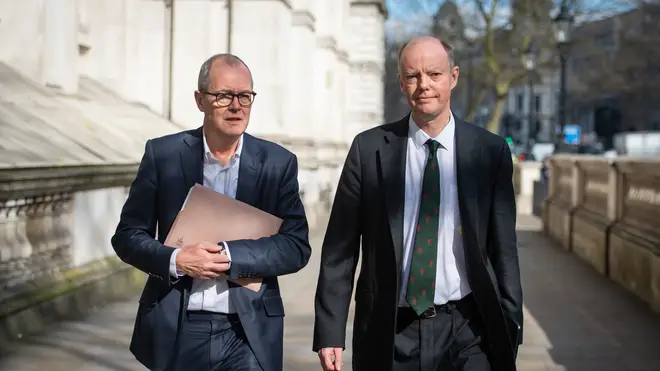
Henry Riley 3pm - 6pm
3 November 2020, 17:54 | Updated: 4 November 2020, 09:27

The tiered system of lockdown restrictions was working but coronavirus deaths in England were still set to reach those in the first wave by mid-December without stricter measures, according to top government advisers.
The Government's chief scientific adviser Sir Patrick Vallance and England's chief medical officer Professor Chris Whitty appeared before the Commons Science and Technology Committee on Tuesday, and were scrutinised by MPs over the science that has led to a new four-week lockdown in England.
The pair was forced to defend some of the modelling presented to the British public at Saturday’s press conference, in particular one study that suggested deaths could peak at 4,000 a day in the second wave.
Labour MP Graham Stringer said to Sir Patrick that suggestion had "frightened a lot of people around the country".
Sir Patrick emphasised that the curves on that chart were based on worst case scenarios, and said the six week forecasts elsewhere in the presentation were more reliable.
Read more: Oxford scientist says Government used 'incorrect graph to justify lockdown'

James O'Brien caller posits biggest mistake PM made in handling Covid
He said the more reliable "six-week forward projection" still suggested without a lockdown the number of people in hospital would pass the first wave "towards the end of November" while the number of deaths would equal those in the first wave "somewhere in mid-December".
And Prof Whitty said although the Tier 2 and Tier 3 restrictions had helped reduce the R number – the reproduction rate of the virus – they had not been able to get it below 1.
He said the evidence showed there was an "exponential curve" in the number of hospital beds being occupied.
On 7 September there were 536 inpatient cases – at the beginning of October it was around 2,500 and "as of today it's actually breached 10,000 people in hospital", he said.
He added: "You don't need too much modelling to tell you that you are on an exponential upward curve of beds."
Read more: Covid-related deaths rise by 46 percent in a week in England and Wales

Liverpool: Robert Jenrick admits he doesn't know how many tests needed
Prof Whitty told MPs that in areas such as Liverpool, where hospitals were already under pressure, only a small increase in the R number could lead to "quite serious trouble".
He also said while infection rates have fallen among younger people, who are less likely to become seriously ill with coronavirus, the same cannot be said for older people.
He told MPs that infection rates had “moved up through the age bands” and that this trend was “likely to translate into hospitalisations, ICU cases and deaths".
Read more: Shoppers in 'disbelief' as panic buyers empty shelves before lockdown
On the modelling used during the presentation, Sir Patrick said it was important to present everything that had been considered when making the decision to return to lockdown.
He said: "These are scenarios put together on assumptions to look at what a reasonable worst-case scenario might be.

Nick Ferrari challenges Jenrick on second lockdown logic
"A reasonable worst-case scenario is something you do not want to happen but is something that could plausibly happen if things went in a certain direction."
He added: "These are not forecasts, these are models that can tell you how things can look."
He referred to figures presented back in September predicting 50,000 cases a day and 200 deaths, saying they had not been there to "scare people" but to "give a scenario".
He added: "As it happens, the numbers turned out to be very close to that, by the time we got there.”